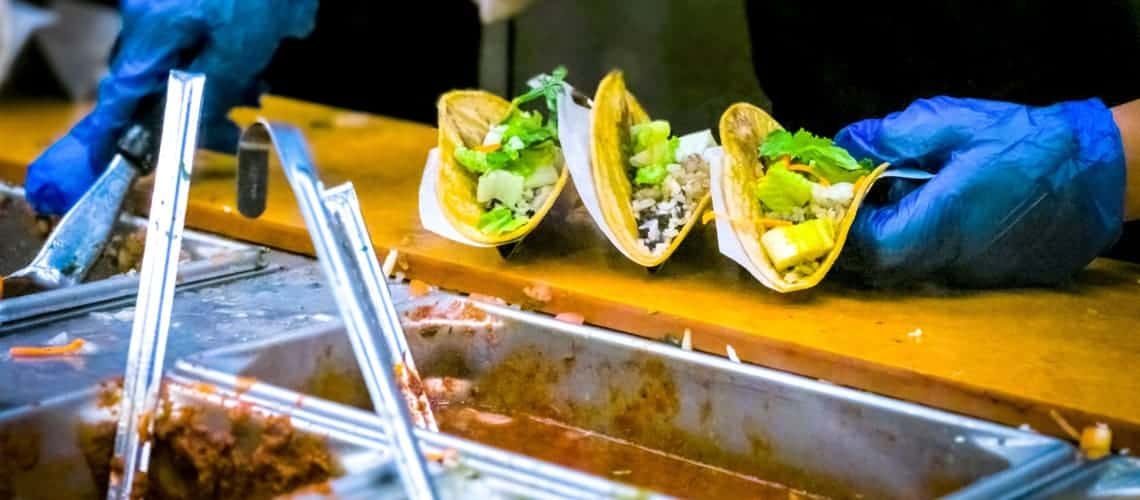Wireless digital temperature sensors make data collection easy, and there are many options for operators looking for a user-friendly option that will keep their business free of litigation and their staff and clients safe.
Food service establishments must be able to demonstrate that their food is stored under strict temperature parameters to control or eliminate pathogens, especially for high-risk products such as poultry. Failure to maintain a strict HACCP (Hazard Analysis and Critical Control Point) based food safety system can have serious consequences. A tarnished reputation, costly litigation and even company closure can be the result of a foodborne illness outbreak among customers.
And regulators are not the only ones scrutinizing hygiene standards in catering establishments. According to a survey by the Food Standards Agency, 43% of consumers are concerned about the food safety of restaurants, pubs, cafes and other eating establishments, with 84% judging establishments on hygiene labels/certificates and general appearance. The research, conducted by real-time business management specialist Checkit, found that 75% of consumers would avoid a food establishment that had been involved in a poisoning or hygiene incident, provided it was under the same management.
Fortunately, modern technology offers safer and faster solutions, with many additional advantages. John Whitehouse, president of the Catering Equipment Suppliers Association (CESA), says, “HACCP compliance is important, but it’s not an easy task. But today’s technology makes it easier by helping operators not only comply with HACCP protocols, but also store, cook and prepare food more safely and use equipment efficiently.”
“Gone are the time-consuming, error-prone, paper-based HACCP protocols of yesterday. Wireless digital systems automatically monitor the temperature of equipment such as refrigerators and freezers, send the data to a device and store it until they need it. They produce reports at the touch of a button. HACCP data is totally reliable and there is no risk of human error or manipulation of the figures.
HACCP recording is sometimes incorporated into equipment such as combi ovens and chillers. Another option is to use stand-alone devices or upgrades that transmit data wirelessly to a central system that can be accessed remotely, a real advantage for multi-plant operators.
In a recent interview, the Managing director of safety equipment supplier Navitas Group, said, “Our own industry research shows that kitchen staff spend around two hours a day manually measuring and recording equipment temperatures. This equates to 60 hours a month and more than 720 hours a year. Add to this the fact that the cost of wasted stock – whether due to human error or equipment failure – can be enormous. An average undercounter unit can hold about 100 pounds of supplies, while the counter can hold more than 4,000 pounds.”
Thermonitor is a cloud-based food safety system consisting of a base station, wireless temperature sensors and repeaters (if needed) to amplify the signal. Because temperature is recorded 24 hours a day, faulty equipment can be identified, saving inventory and avoiding the risk of equipment being out of range and returned to a safe area when unattended.”
Thermonitor’s alarm escalation system alerts management to unresolved issues, and other sensors report open doors or equipment shutdowns. Thermonitor sends temperature, time and product-specific user logs to handheld Android devices, which can also be used to trigger other food safety tasks, log deliveries or identify allergens and record incidents, for example.
The Thermonitor provides instant recording of temperature, time, date, location and clear identification of what has been measured. The system can send alarms via apps, SMS and email.
Technology that eliminates complexity and automates routine, error-prone processes increases job satisfaction and gives companies an edge in the fierce competition for skilled employees. “Companies that invest in equipping employees with the tools they need to perform their core tasks more efficiently will be more attractive to employees,”.
“Automated temperature control is a leading indicator of a more inclusive culture, as it reduces repetitive and routine tasks and allows staff to focus on cooking and creating food.”
Temperature control considerations when buying a wireless temperature monitoring system
- Consider what needs to be controlled to protect inventory and assets (temperature, humidity, equipment performance, access) and how it can be integrated into the overall operation to improve performance and compliance.
- Need static and/or mobile monitoring applications? Hot and cold? Air and liquid? Look for stand-alone operation so that data can be recorded even if the network is down.
- Do you need a customized solution (designed or adapted)? Develop customizable parameters to respond to alarms.
- Look for solutions that allow access and monitoring from any location, eliminating the need for on-site visits or local servers.
- Ensure that records are readily available and organized for audits and reviews, and use consultants to help you monitor best practices.


